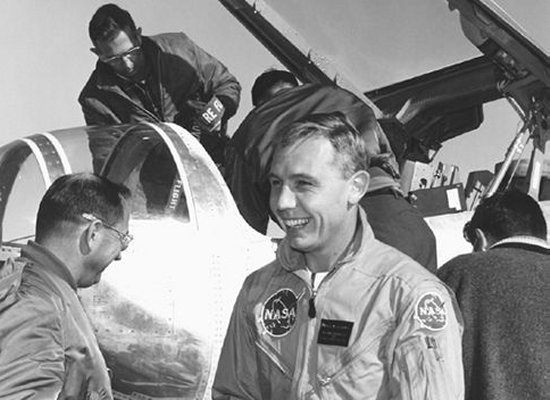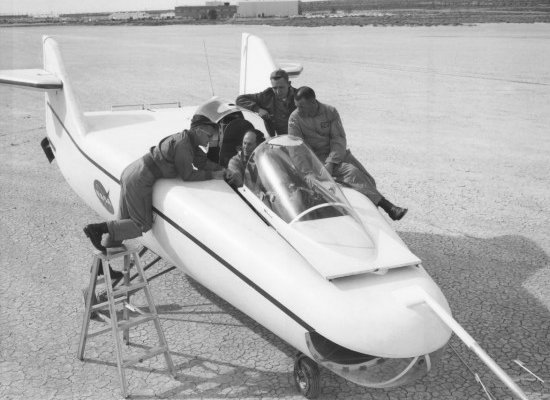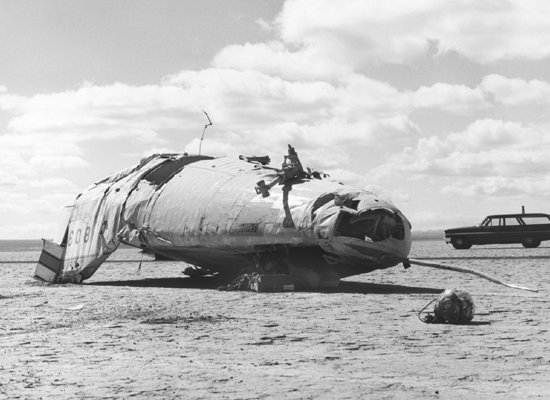|
||||||||||
|
|
||||||||||
|
||||||||||
|
|
||||||||||
The aviation world lost an historic test pilot recently when Bruce Peterson passed away at the age of 72. Peterson was one of NASA's test pilots who flew several of the unique lifting body vehicles of the 1960s. Unlike conventional aircraft that develop the majority of their lift using wings, lifting bodies utilize unusual fuselage shapes to generate aerodynamic lift for flight. This design is most advantageous at high supersonic or hypersonic speeds where the high drag and temperatures developed because of friction with the air make it difficult for normal wings to survive.

Bruce Peterson started flying these lifting bodies after he began working at the NASA Dryden Flight Research Center at Edwards Air Force Base in California. Prior to become a test pilot, Peterson attended UCLA and Cal Poly San Luis Obispo where he completed his bachelor of science degree in aeronautical engineering in 1960. He then moved to NASA Dryden where he was first hired as an engineer. By 1962, Peterson had transferred to flight operations where he performed his first test flight duties for a paraglider research project called the Parasev. More conventional research craft he flew included the NT-33A Variable Stability Trainer, F5D-1, F-100, F-104, F-111, and B-52.
Peterson's most famous efforts, however, came as pilot of the lifting body research vehicles. He first flew the M2-F1 on 3 December 1963. This craft was an unpowered low-speed proof-of-concept vehicle that was towed to an altitude of 12,000 ft (3,655 m) by a C-47. Once released, the M2-F1 glided to a landing to test the low-speed control characteristics of the lifting body concept. Peterson completed 17 flights aboard the M2-F1 before graduating to the more advanced M2-F2 and HL-10.
Though outwardly similar to its predecessor, the M2-F2 was a much heavier vehicle designed for flight at higher speeds and altitudes. Instead of using a tow plane, this research craft was carried aloft aboard a B-52 mother plane and released to fly under the power of an onboard rocket motor. The Northrop HL-10 was similar but designed for even greater performance and reached the highest speeds of the lifting body program. Peterson made the maiden flight of the HL-10 on 22 December 1966, but his further involvement in this program was curtailed due to troubles with the M2-F2. Early flights of this vehicle were gliding tests while later flights were to employ the rocket motor. Bruce Peterson was one of the pilots chosen to conduct these early tests and made his first unpowered glide during the sixth flight of the program in September 1966.

He made just two more flights aboard the M2-F2 when disaster struck. On 10 May 1967 during the sixteenth flight of the program, Peterson was gliding towards the runway on the dry lakebed at Edwards AFB when the vehicle became uncontrollable. A phenomenon called pilot induced oscillation (PIO) caused Peterson to overcompensate for changes in the aircraft's reactions to previous control inputs. The problem often occurs when the pilot perceives a lag in how quickly an aircraft responds to his control corrections and may inadvertently make increasingly larger corrections in opposite directions that overcompensate for the lag. The M2-F2 rolled back and forth as Peterson tried to bring it back under control.
Though he was succeeding, Peterson drifted away from the runway and over an unmarked portion of the lakebed where he had difficulty judging his altitude. The M2-F2 touched down on the surface at a speed of 250 mph (400 km/h) before its landing gear was fully deployed causing the craft to tumble across the lakebed. After rolling over six times, the lifting body came to rest upside down with Peterson trapped inside. Thankfully, he was pulled from the wreckage and rushed to the hospital for treatment. Peterson had been seriously injured and required an extensive hospital stay, but he eventually made a complete recovery aside from losing vision in his right eye due to an infection.
In an ironic twist, this crash and its aftermath proved to be one of Peterson's longest-lasting legacies since it became a featured part of the opening credits of the television series The Six Million Dollar Man. Footage of the accident and Peterson being pulled from the wreckage was repeated each episode while the voice over stated, "Steve Austin: astronaut. A man barely alive. Gentlemen, we can rebuild him. We have the technology. We have the capability to make the world's first bionic man. Steve Austin will be that man. Better than he was before. Better... stronger... faster." Perhaps not surprisingly, Peterson reportedly complained about how much he disliked the frequent reminders of his nearly fatal accident being shown so often.

Following his recovery and in spite of his loss of sight, Peterson remained a NASA pilot who frequently flew support missions and flight tests, and he also flew for a Marine Corps Reserve unit until 1971. He logged over 6,000 flight hours aboard almost 70 types of aircraft during his career. Peterson also served as project engineer on the NASA's F-8 digital fly-by-wire test aircraft and was in charge of safety and quality assurance a NASA Dryden until he left government service in 1981. He rounded out his career working for Northrop where he became manager of system safety and human factors for the B-2 project until his retirement in 1994.
Bruce Peterson received many accolades for his accomplishments during his career, including the Tony LeVier Flight
Safety Award in 2002, NASA's exceptional leadership award for the preparations he made to support the first Space
Shuttle landing in 1981, becoming a fellow of the Society of Experimental Test Pilots, and his induction into the
Lancaster Aerospace Walk of Honor. Bruce Peterson passed away on 1 May 2006 following a long illness.
- answer by Joe Yoon, 28 May 2006
Read More Articles:


|
Aircraft | Design | Ask Us | Shop | Search |

|
|
| About Us | Contact Us | Copyright © 1997- | |||
|
|
|||